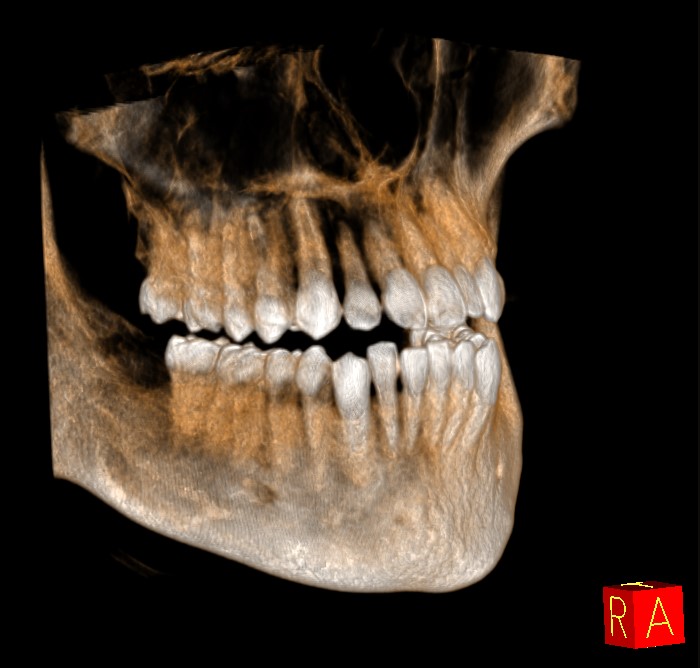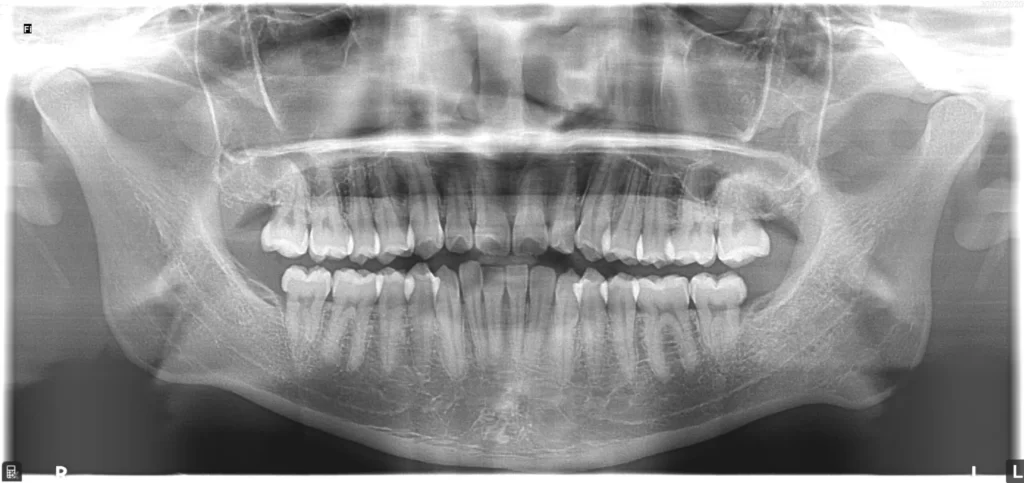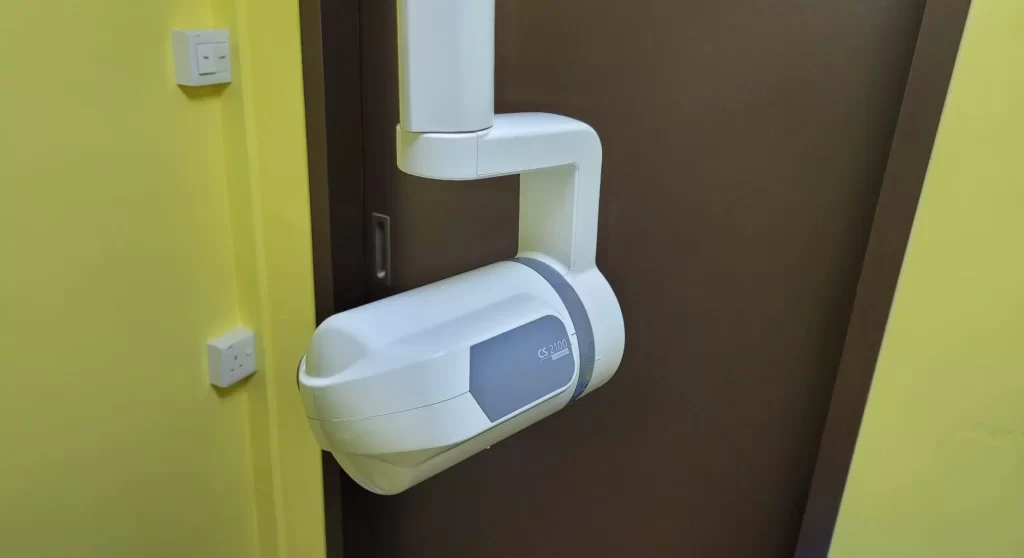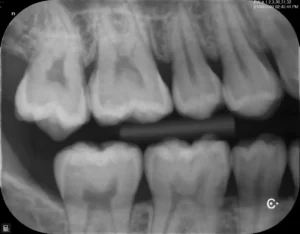Why Would I Need It?
Dental X-Rays are needed for dentists to evaluate your oral health more comprehensively. They can show hidden cavities, bone loss due to gum disease, and how your wisdom teeth are positioned when they are impacted.
Some examples of conditions that call for radiographic assessment:
Patients with gum disease: to monitor bone loss and calculus deposits under the gum level.
Patients with restorations: Check for potential decay under or around restorations.
Patients who smoke: to monitor bone loss. Smokers are at a higher risk of gum disease.
Patients with impacted wisdom teeth: to visualise the wisdom tooth eruption, length and type of roots.
Patients with dental anomalies: to check for certain dental anomalies such as supernumerary teeth (extra teeth) and ectopic teeth (mispositioned teeth).
Types of X-Rays

3D (CBCT)
This x-ray can be adjusted to capture a certain number of teeth in the 3D space, or the full jaw.
This x-ray is useful for visualising the positioning of wisdom teeth, implants, supernumerary teeth, teeth roots, which is greatly useful and sometimes necessary information for certain cases.

Panoramic (OPG)
This 2D X-ray captures all teeth in the mouth, the sinuses, the jaw and the jaw joint.
This x-ray is useful to give the clinician an overall picture of your oral health and to assess the presence as well as positioning of wisdom teeth.


Intraoral (Bitewing / Periapical)
These types of x-ray captures 2-3 teeth with greater accuracy compared to the OPG.
Bitewing captures the upper and lower tooth crowns. This is commonly used to check for decay that happen in between teeth and under existing fillings

Periapical captures in detail 2-3 complete teeth from root to crown. They are used to detect any abnormalities in the root and surrounding bone structure.

Cost of Dental X-Rays
CHAS subsidises up to 6 X-Rays per calendar year. View the CHAS subsidy table 
Frequently Asked Questions
The amount of radiation exposure while taking your x-ray is very small. We also provide a thyroid shield to prevent unnecessary exposure.
Yup! For panoramic and intraoral, we send it by default. Drop us an email/WhatsApp message if you haven’t received yours after taking an x-ray.
For 3D X-rays, we can send you a copy too, but it involves a large file transfer (~800MB), and you will need a computer with decent specifications to run the viewer.
Yup! In fact, the amount of radiation exposure from one bitewing or periapical x-ray is less than the background radiation you are exposed to in your daily life in roughly a year.
X-rays are taken for 2 purposes:
- For routine radiographic screening, x-rays may be taken every 2-3 years to set a baseline for your oral health.
- For diagnosis of dental conditions and disease as required and prescribed by your dentist.


